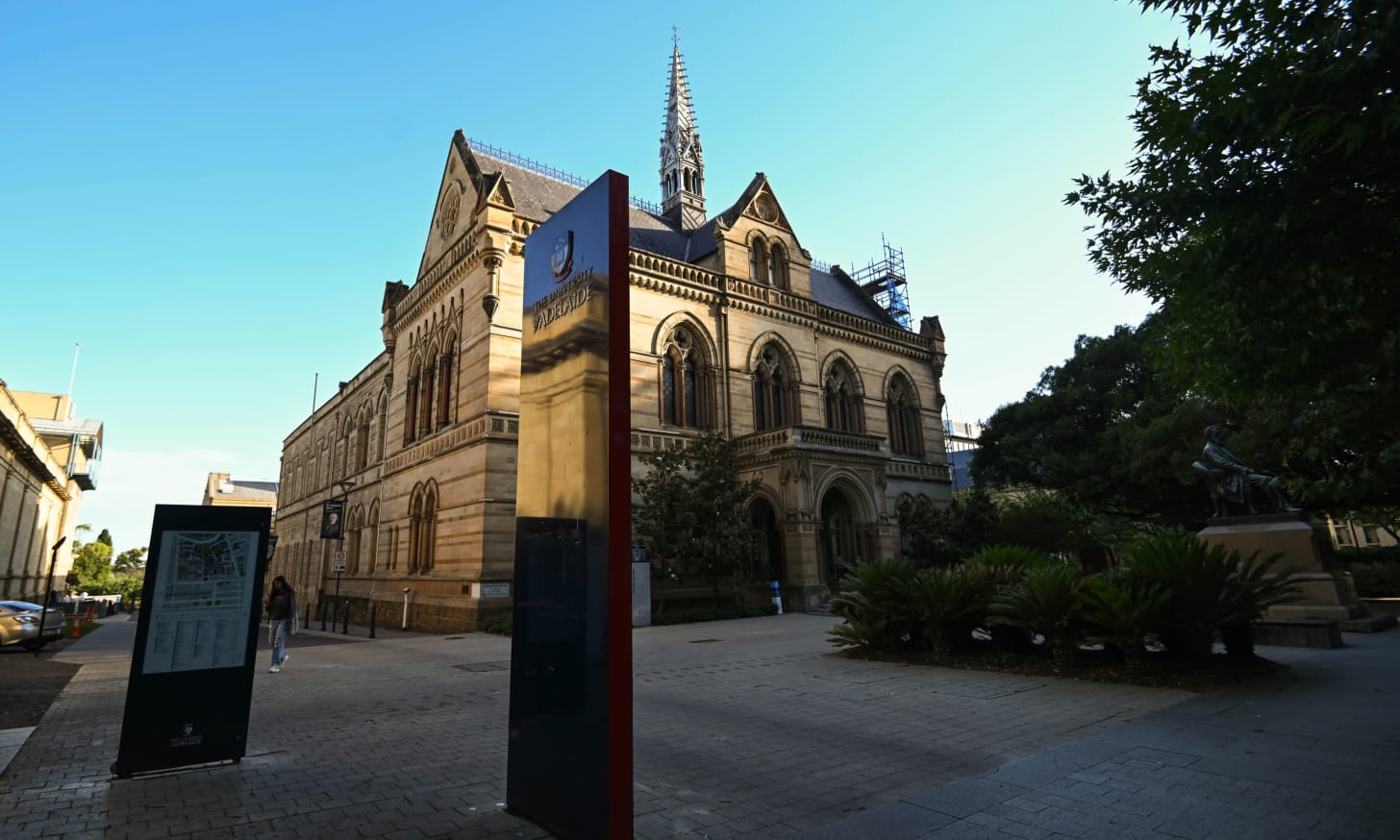
The bells are tolling for the demise of the university classroom—at least its physical manifestation. Administrative barbarians are readying their knives and brandishing their drivel-fed visions about pedagogy, a word they scant define, let alone spell. They find it unseemly that an academic could turn up, in person, to teach students who, likewise, turn up in person, to engage in that rich process known as the acquiring of knowledge.
The acuity of this state of affairs has been notable in Australia. This month, the University of Adelaide gassed unsuspecting believers of such traditional forms of learning with a lethal statement. As of 2026, when a new amalgamated behemoth in South Australia, combining the University of Adelaide and University of South Australia, will emerge, students will no longer be turning up, in person, to classes. This would have hardly shocked those familiar with the University of Adelaide’s effort to do the very same thing in 2015. For years, the university managers have hated the physical classroom.
As is always the case with these pronouncements, a fictional body of evidence, opinion and sentiment is referred to by way of justification. “Universities,” claimed a spokesman for Adelaide University, “have been increasingly responding to student needs for a flexible delivery over the years, and the shift away from face-to-face lectures is not new.” Who are these remarkable, absentee students? What, pray, is the sample size? Answer: there was none.
Then comes the elaborate ground cover masking the undemocratic nature of the decision. The domain lead for curriculum (such positions multiply like fungi) at Adelaide University, Joanne Cys, seemed under the impression that staff had been “comprehensively engaged” in developing the new curriculum. “This collaboration is ongoing … with more than 1,500 staff set to develop the content for Adelaide’s University courses and programs between now and 2026.” Content, in these settings, is a very loose concept, not to mention staff qualifications.
The culling of lectures is part of the “Adelaide Attainment Model,” a slimming program that will see trimesters introduced by 2028. It satisfies a “modular” fetish—the world of learning envisaged as starved catwalk models moving across the stage rather than well fed samples of learning buried in books. As such, these modules can be undertaken in the form of online courses, which offer fleeting flexibility and shallow taste. This is education thinned and skinned, fatless and deprived.
To give a sense of this, the Adelaide document is full of anaemic terms. “These activities will deliver an equivalent learning volume to traditional lectures and will form a common baseline for digital learning across courses, providing a consistent experience for students.” The claims to consistency are certainly accurate, in so far as such an experience will be numbingly mediocre.
The document expresses the view that such “asynchronous activities will be self-paced and self-directed, utilising high-quality digital resources that students can engage with anytime and anywhere.”
Within the temple of desecration, certain devotees are expressing concern. “The best assurance we have is there can still be practicals, tutorials or workshops, yet we cannot really teach content in these,” suggested one lecturer to In Daily. Activities might involve quizzes, readings and “short videos” as substitutes for lectures. “This mode of teaching is almost impossible for STEM [science, technology, engineering and mathematics], health and medicine degrees.”
Every haughty contrarian will find a cowardly sycophant justifying such decay as the heralding of progress. “We sort of already do what is suggested anyway,” claims one unnamed apologist academic, also quoted by In Daily. Students already see “recordings” to begin with, and only then do they go into “face-to-face sessions that are more interactive”. It might be worth asking the obvious point here: why have the recordings in the first place to excuse your reason to teach?
This unnamed individual adopts a very casual attitude towards the modern mutilations of education. “The silly thing about it all is that’s what we do anyway, and the reality is students often don’t watch the recording before coming to the class winds up a bit like being a lecture anyway to make sure they get through the material.” These are comments that remind any reformer that the last bastion of change will always be the academy.
The move towards abolishing such teaching also suggests that the rotting foundations were already offering much for this change. Funded, slothful ignoramuses were already advancing the idea for some years that the classroom be “flipped,” a convenient way which ignores the rigours of instruction and disciplined learning in favour of convenient schedules best done at home. The flipped classroom became the precursor for extinguishing coherent, disciplined learning, linked to space, people and experiences.
The COVID-19 pandemic provided an accelerant for money-pinching administrative juntas to experiment with eliminating student-teacher classes without providing the experience that supposedly accompanies it. Savings were there to be made, student welfare to be manipulated. Here was a chance to extract the pith from the student orchard without providing an ounce of nourishment. The advent of artificial intelligence (AI) technologies is merely the next step in retiring, forever, the human in the classroom, a process that, disturbingly enough, will seek to retire the student as well.
In a stingingly sharp piece, scientist Geoff Davies describes the ball wreckers of university teaching as “managerial digital infidels” who treat education as a matter of harvesting knowledge, a body comprising “a big collection of pieces, factoids that can be served in small bowls for the student to consume.” A bleak, apocalyptic interpretation is offered. “Thus, the neoliberal mindset of isolated, asocial individuals competing through a series of fragmented transactions is carried down to its ultimate subversion of the very knowledge on which our culture and civilisation are built.”



